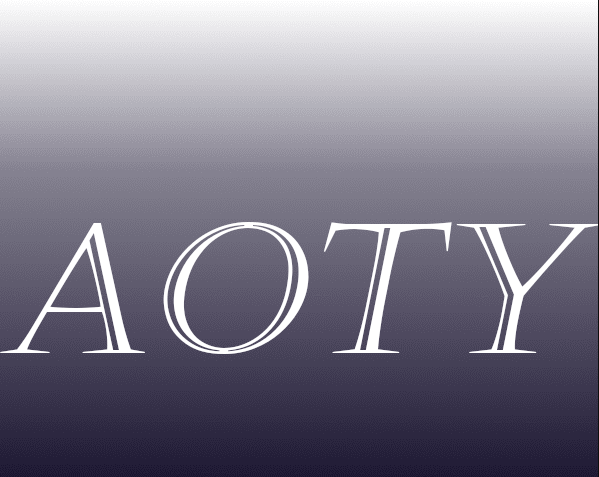Album of the Year (AOTY) is the single most-watched category at the Grammys because it crowns a record that not only dominated playlists and charts but also captured something essential about its cultural moment. While the gilded gramophone is physically the same each February, the paths that lead artists to that podium vary wildly. By looking back at five recent AOTY triumphs—Beyoncé’s Cowboy Carter (2025), Taylor Swift’s Midnights (2024), Harry Styles’ Harry’s House (2023), Jon Batiste’s We Are (2022) and Billie Eilish’s When We All Fall Asleep, Where Do We Go? (2020)—we can distill practical, career-shaping lessons for today’s emerging musicians. Whether you record in a bedroom or a billion-dollar studio, these insights will help you position your next release as a genuine AOTY contender.
Table of Contents
1. Genre Fearlessness Is a Superpower
When Beyoncé rode into Nashville territory with Cowboy Carter she shattered the unspoken rules about who gets to make “authentic” country music, then carried the AOTY trophy home for the first time. People.comLatest news & breaking headlines. Her album blends pedal-steel twang, gospel modulations, trap drums, and spoken-word interludes without ever sounding like a gimmick. The takeaway is straightforward: audiences—and the Academy—reward risk when it feels honest. Independent artists often worry that crossing genre lines will confuse listeners, but Beyoncé proves that a cohesive artistic vision matters more than rigid labeling. In an ecosystem ruled by playlists, hybrid sounds actually widen your reach; algorithms file Cowboy Carter under country, R&B, and pop, multiplying first-stream opportunities. So, if you’re sitting on a folk-drill mash-up or a bhangra-punk anthem, don’t tuck it away. Instead, double down on authentic fusion and make sonic audacity part of your brand DNA. AOTY history favors the brave.
2. Personal Storytelling Wins Hearts—and Votes
Taylor Swift’s fourth AOTY win with Midnights broke the record for the category NBC 5 Dallas-Fort WorthPitchfork. What set Midnights apart was not production fireworks (though Jack Antonoff’s lush synth beds sparkle) but its diaristic honesty. The album maps sleepless nights, self-doubt, and private daydreams with novelist detail, turning niche anxieties into universal confessions. Listeners felt seen, and Recording Academy voters felt the craftsmanship. For rising songwriters, the lesson is that transparency converts casual fans into lifelong believers. Instead of asking, “What topic is trending on TikTok?” ask, “What truth am I scared to share?” When that vulnerable line finally hits tape—whether it’s about grief, joy, or identity—you invite an emotional investment no marketing budget can buy. Remember: modern listeners sniff out synthetic vulnerability in a heartbeat. Real diaries age better than calculated buzzwords, and longevity is currency when the AOTY ballots land.
3. Cohesive World-Building Turns Albums Into Experiences
Harry Styles’ Harry’s House surprised pundits who predicted a Beyoncé sweep in 2023. Yet voters gravitated toward an LP that felt like stepping inside a single, lovingly furnished apartment in Pitchfork. From the pastel cover art to the domestic-life lyrics and warm analog production, every element whispered “home.” The streaming era rewards singles, but the AOTY category still honors projects that reward uninterrupted listening. If you want your record to live past release week, craft a throughline: a color palette, a locus in time, recurring field recordings—anything that makes the listener’s world shrink to your universe for 40 minutes. Cohesion also simplifies promotion: one strong visual concept feeds endless content (merch, stage design, video thumbnails) without diluting the core message. In short, make your album a place, not a playlist; let fans purchase a boarding pass instead of one-way tickets to isolated tracks.
4. Magnetic Live Presence Extends the Narrative
When Jon Batiste claimed AOTY with We Are, he was already a road warrior—from New Orleans parades to late-night TV gigs—but his Grammy-night medley sealed the win, radiating jubilant musicianship that matched the record’s spirit GRAMMYs. Even in 2025’s mostly digital landscape, live performance remains a credibility litmus test. Booking budgets might be thin, yet live streams, rooftop sessions, and fan-hosted house concerts count. The goal is to translate studio textures into living, breathing moments that circulate on social feeds. AOTY voters often recall how an album felt in the room, not just how it sounded through headphones. Iterate your set until it embodies your record—use costume cues, narrative interludes, or improvisational segments that elevate album tracks rather than merely replay them. Record labels may chase TikTok virality; you should chase goosebumps. Impress people in one unforgettable 15-minute set, and they’ll carry your story into every conversation, algorithm be damned.

5. Collaboration and Trust Elevate Raw Ideas
Billie Eilish’s landmark sweep of all four General Field categories at age 18 hinged on a near-telepathic partnership with her brother Finneas, who co-wrote and produced every note in their childhood bedroom GRAMMYs. The stripped-down beats, ASMR-esque vocals, and horror-film sound design of When We All Fall Asleep… were possible only because the duo allowed unconventional instincts to flourish without outside pressure. Regardless of budget, you need peers who critique and champion you in equal measure. Build a circle—whether that’s a producer roommate, a Discord songwriting group, or local jazz majors hungry for session work—and foster psychological safety. An environment where “bad” ideas can be voiced without eye-rolls routinely births the good weirdness that cuts through saturated feeds. Credits also matter: AOTY victories shine extra light on engineers, mixers, mastering gurus, and featured musicians. Their reputations surge when yours does, creating a virtuous cycle: the better your collaborators fare, the more top-shelf talent will want to join your next adventure.
Conclusion: Turning Insight Into Action
A cursory glance at recent AOTY winners reveals no single formula—Beyoncé’s maximalist mosaic, Swift’s lyrical introspection, Styles’ pastel intimacy, Batiste’s genre-spanning uplift, and Eilish’s bedroom minimalism differ wildly. Yet beneath the surface, five throughlines emerge: fearless genre play, ruthless honesty, holistic world-building, unforgettable live moments, and collaborative trust. Apply these in proportion to your own artistic identity and resources. You may not have a stadium budget, but you have freedom, curiosity, and a global distribution network on your phone. Aim to make music that only you could have released in this exact year, and you’ll already be speaking the secret language of AOTY.
Frequently Asked Questions About AOTY
1. How many times can the same artist win AOTY?
There’s no formal limit. Taylor Swift set the standing record in 2024 when Midnights became her fourth AOTY winner, surpassing legends like Sinatra and Stevie Wonder Pitchfork. While repeat victories are rare, they underscore that consistent artistic evolution keeps voters engaged.
2. Does chart success guarantee AOTY consideration?
No. Commercial giants often lose if the Academy perceives another album as more groundbreaking. Beyoncé’s 2025 win followed massive streaming numbers, but Jon Batiste’s We Are triumphed in 2022 over several higher-selling projects, GRAMMYs. Critical depth, innovation, and cultural impact weigh heavily.
3. Is genre diversity a recent trend among winners?
Yes, but the shift reflects broader listening habits. In the past five cycles alone, country-fusion, synth-pop, neo-soul, jazz-funk, and avant-pop projects have each claimed AOTY. This mirrors the playlist era, where audiences freely bounce between styles and expect artists to do the same.
4. Do independent or bedroom-produced albums realistically stand a chance?
Absolutely. Billie Eilish’s 2020 victory was tracked almost entirely in a home studio GRAMMYs. The Academy increasingly values authenticity and visionary production over sheer studio expense. Polished mixing and mastering still matter, but industry ties are no longer gatekeepers.
5. What timeline should emerging artists follow when planning an AOTY-level release?
There’s no fixed calendar, yet winners typically spend 18–36 months from writing to release, allowing time for iteration, thematic cohesion, rollout strategy, and live rehearsal. Rushing to capitalize on a viral single can sabotage album unity. Treat the LP like a cinematic premiere: script, storyboard, edit, test-screen, then launch.

